Target Information
| Target General Information | Top | |||||
|---|---|---|---|---|---|---|
| Target ID |
T03634
(Former ID: TTDNC00387)
|
|||||
| Target Name |
CREB-binding protein (CREBBP)
|
|||||
| Synonyms |
CREBbinding protein; CBP
Click to Show/Hide
|
|||||
| Gene Name |
CREBBP
|
|||||
| Target Type |
Clinical trial target
|
[1] | ||||
| Disease | [+] 4 Target-related Diseases | + | ||||
| 1 | Acute myeloid leukaemia [ICD-11: 2A60] | |||||
| 2 | Solid tumour/cancer [ICD-11: 2A00-2F9Z] | |||||
| 3 | Systemic sclerosis [ICD-11: 4A42] | |||||
| 4 | Prostate cancer [ICD-11: 2C82] | |||||
| Function |
Acetylates non-histone proteins, like NCOA3 and FOXO1. Binds specifically to phosphorylated CREB and enhances its transcriptional activity toward cAMP-responsive genes. Acts as a coactivator of ALX1. Acts as a circadian transcriptional coactivator which enhances the activity of the circadian transcriptional activators: NPAS2-ARNTL/BMAL1 and CLOCK-ARNTL/BMAL1 heterodimers. Acetylates PCNA; acetylation promotes removal of chromatin-bound PCNA and its degradation during nucleotide excision repair (NER). Functions as a transcriptional coactivator for SMAD4 in the TGF-beta signaling pathway. Acetylates histones, giving a specific tag for transcriptional activation.
Click to Show/Hide
|
|||||
| BioChemical Class |
Acyltransferase
|
|||||
| UniProt ID | ||||||
| EC Number |
EC 2.3.1.48
|
|||||
| Sequence |
MAENLLDGPPNPKRAKLSSPGFSANDSTDFGSLFDLENDLPDELIPNGGELGLLNSGNLV
PDAASKHKQLSELLRGGSGSSINPGIGNVSASSPVQQGLGGQAQGQPNSANMASLSAMGK SPLSQGDSSAPSLPKQAASTSGPTPAASQALNPQAQKQVGLATSSPATSQTGPGICMNAN FNQTHPGLLNSNSGHSLINQASQGQAQVMNGSLGAAGRGRGAGMPYPTPAMQGASSSVLA ETLTQVSPQMTGHAGLNTAQAGGMAKMGITGNTSPFGQPFSQAGGQPMGATGVNPQLASK QSMVNSLPTFPTDIKNTSVTNVPNMSQMQTSVGIVPTQAIATGPTADPEKRKLIQQQLVL LLHAHKCQRREQANGEVRACSLPHCRTMKNVLNHMTHCQAGKACQVAHCASSRQIISHWK NCTRHDCPVCLPLKNASDKRNQQTILGSPASGIQNTIGSVGTGQQNATSLSNPNPIDPSS MQRAYAALGLPYMNQPQTQLQPQVPGQQPAQPQTHQQMRTLNPLGNNPMNIPAGGITTDQ QPPNLISESALPTSLGATNPLMNDGSNSGNIGTLSTIPTAAPPSSTGVRKGWHEHVTQDL RSHLVHKLVQAIFPTPDPAALKDRRMENLVAYAKKVEGDMYESANSRDEYYHLLAEKIYK IQKELEEKRRSRLHKQGILGNQPALPAPGAQPPVIPQAQPVRPPNGPLSLPVNRMQVSQG MNSFNPMSLGNVQLPQAPMGPRAASPMNHSVQMNSMGSVPGMAISPSRMPQPPNMMGAHT NNMMAQAPAQSQFLPQNQFPSSSGAMSVGMGQPPAQTGVSQGQVPGAALPNPLNMLGPQA SQLPCPPVTQSPLHPTPPPASTAAGMPSLQHTTPPGMTPPQPAAPTQPSTPVSSSGQTPT PTPGSVPSATQTQSTPTVQAAAQAQVTPQPQTPVQPPSVATPQSSQQQPTPVHAQPPGTP LSQAAASIDNRVPTPSSVASAETNSQQPGPDVPVLEMKTETQAEDTEPDPGESKGEPRSE MMEEDLQGASQVKEETDIAEQKSEPMEVDEKKPEVKVEVKEEEESSSNGTASQSTSPSQP RKKIFKPEELRQALMPTLEALYRQDPESLPFRQPVDPQLLGIPDYFDIVKNPMDLSTIKR KLDTGQYQEPWQYVDDVWLMFNNAWLYNRKTSRVYKFCSKLAEVFEQEIDPVMQSLGYCC GRKYEFSPQTLCCYGKQLCTIPRDAAYYSYQNRYHFCEKCFTEIQGENVTLGDDPSQPQT TISKDQFEKKKNDTLDPEPFVDCKECGRKMHQICVLHYDIIWPSGFVCDNCLKKTGRPRK ENKFSAKRLQTTRLGNHLEDRVNKFLRRQNHPEAGEVFVRVVASSDKTVEVKPGMKSRFV DSGEMSESFPYRTKALFAFEEIDGVDVCFFGMHVQEYGSDCPPPNTRRVYISYLDSIHFF RPRCLRTAVYHEILIGYLEYVKKLGYVTGHIWACPPSEGDDYIFHCHPPDQKIPKPKRLQ EWYKKMLDKAFAERIIHDYKDIFKQATEDRLTSAKELPYFEGDFWPNVLEESIKELEQEE EERKKEESTAASETTEGSQGDSKNAKKKNNKKTNKNKSSISRANKKKPSMPNVSNDLSQK LYATMEKHKEVFFVIHLHAGPVINTLPPIVDPDPLLSCDLMDGRDAFLTLARDKHWEFSS LRRSKWSTLCMLVELHTQGQDRFVYTCNECKHHVETRWHCTVCEDYDLCINCYNTKSHAH KMVKWGLGLDDEGSSQGEPQSKSPQESRRLSIQRCIQSLVHACQCRNANCSLPSCQKMKR VVQHTKGCKRKTNGGCPVCKQLIALCCYHAKHCQENKCPVPFCLNIKHKLRQQQIQHRLQ QAQLMRRRMATMNTRNVPQQSLPSPTSAPPGTPTQQPSTPQTPQPPAQPQPSPVSMSPAG FPSVARTQPPTTVSTGKPTSQVPAPPPPAQPPPAAVEAARQIEREAQQQQHLYRVNINNS MPPGRTGMGTPGSQMAPVSLNVPRPNQVSGPVMPSMPPGQWQQAPLPQQQPMPGLPRPVI SMQAQAAVAGPRMPSVQPPRSISPSALQDLLRTLKSPSSPQQQQQVLNILKSNPQLMAAF IKQRTAKYVANQPGMQPQPGLQSQPGMQPQPGMHQQPSLQNLNAMQAGVPRPGVPPQQQA MGGLNPQGQALNIMNPGHNPNMASMNPQYREMLRRQLLQQQQQQQQQQQQQQQQQQGSAG MAGGMAGHGQFQQPQGPGGYPPAMQQQQRMQQHLPLQGSSMGQMAAQMGQLGQMGQPGLG ADSTPNIQQALQQRILQQQQMKQQIGSPGQPNPMSPQQHMLSGQPQASHLPGQQIATSLS NQVRSPAPVQSPRPQSQPPHSSPSPRIQPQPSPHHVSPQTGSPHPGLAVTMASSIDQGHL GNPEQSAMLPQLNTPSRSALSSELSLVGDTTGDTLEKFVEGL Click to Show/Hide
|
|||||
| 3D Structure | Click to Show 3D Structure of This Target | AlphaFold | ||||
| HIT2.0 ID | T15M1G | |||||
| Drugs and Modes of Action | Top | |||||
|---|---|---|---|---|---|---|
| Clinical Trial Drug(s) | [+] 2 Clinical Trial Drugs | + | ||||
| 1 | C 82 | Drug Info | Phase 1/2 | Scleroderma | [3] | |
| 2 | PRI-724 | Drug Info | Phase 1/2 | Acute myeloid leukaemia | [4] | |
| Mode of Action | [+] 2 Modes of Action | + | ||||
| Inhibitor | [+] 5 Inhibitor drugs | + | ||||
| 1 | C 82 | Drug Info | [3] | |||
| 2 | Pyrrolo-pyrrolone derivative 6 | Drug Info | [6] | |||
| 3 | I-CBP112 | Drug Info | [7] | |||
| 4 | ischemin | Drug Info | [8] | |||
| 5 | SGC-CBP30 | Drug Info | [9] | |||
| Modulator | [+] 1 Modulator drugs | + | ||||
| 1 | PRI-724 | Drug Info | [1] | |||
| Cell-based Target Expression Variations | Top | |||||
|---|---|---|---|---|---|---|
| Cell-based Target Expression Variations | ||||||
| Drug Binding Sites of Target | Top | |||||
|---|---|---|---|---|---|---|
| Ligand Name: Acetaminophen | Ligand Info | |||||
| Structure Description | BROMODOMAIN OF HUMAN CREBBP WITH N-(4-hydroxyphenyl)acetamide | PDB:4A9K | ||||
| Method | X-ray diffraction | Resolution | 1.81 Å | Mutation | No | [10] |
| PDB Sequence |
KIFKPEELRQ
1092 ALMPTLEALY1102 RQDPESLPFR1112 QPVDPQLLGI1122 PDYFDIVKNP1132 MDLSTIKRKL 1142 DTGQYQEPWQ1152 YVDDVWLMFN1162 NAWLYNRKTS1172 RVYKFCSKLA1182 EVFEQEIDPV 1192 MQSLG
|
|||||
|
|
||||||
| Ligand Name: CCS1477 | Ligand Info | |||||
| Structure Description | Crystal structure of CBP bromodomain liganded with CCS1477 | PDB:7XH6 | ||||
| Method | X-ray diffraction | Resolution | 1.75 Å | Mutation | No | [11] |
| PDB Sequence |
FKPEELRQAL
1094 MPTLEALYRQ1104 DPESLPFRQP1114 VDPQLLGIPD1124 YFDIVKNPMD1134 LSTIKRKLDT 1144 GQYQEPWQYV1154 DDVWLMFNNA1164 WLYNRKTSRV1174 YKFCSKLAEV1184 FEQEIDPVMQ 1194 SL
|
|||||
|
|
||||||
| Click to View More Binding Site Information of This Target with Different Ligands | ||||||
| Different Human System Profiles of Target | Top |
|---|---|
|
Human Similarity Proteins
of target is determined by comparing the sequence similarity of all human proteins with the target based on BLAST. The similarity proteins for a target are defined as the proteins with E-value < 0.005 and outside the protein families of the target.
A target that has fewer human similarity proteins outside its family is commonly regarded to possess a greater capacity to avoid undesired interactions and thus increase the possibility of finding successful drugs
(Brief Bioinform, 21: 649-662, 2020).
Human Tissue Distribution
of target is determined from a proteomics study that quantified more than 12,000 genes across 32 normal human tissues. Tissue Specificity (TS) score was used to define the enrichment of target across tissues.
The distribution of targets among different tissues or organs need to be taken into consideration when assessing the target druggability, as it is generally accepted that the wider the target distribution, the greater the concern over potential adverse effects
(Nat Rev Drug Discov, 20: 64-81, 2021).
Human Pathway Affiliation
of target is determined by the life-essential pathways provided on KEGG database. The target-affiliated pathways were defined based on the following two criteria (a) the pathways of the studied target should be life-essential for both healthy individuals and patients, and (b) the studied target should occupy an upstream position in the pathways and therefore had the ability to regulate biological function.
Targets involved in a fewer pathways have greater likelihood to be successfully developed, while those associated with more human pathways increase the chance of undesirable interferences with other human processes
(Pharmacol Rev, 58: 259-279, 2006).
Biological Network Descriptors
of target is determined based on a human protein-protein interactions (PPI) network consisting of 9,309 proteins and 52,713 PPIs, which were with a high confidence score of ≥ 0.95 collected from STRING database.
The network properties of targets based on protein-protein interactions (PPIs) have been widely adopted for the assessment of target’s druggability. Proteins with high node degree tend to have a high impact on network function through multiple interactions, while proteins with high betweenness centrality are regarded to be central for communication in interaction networks and regulate the flow of signaling information
(Front Pharmacol, 9, 1245, 2018;
Curr Opin Struct Biol. 44:134-142, 2017).
Human Similarity Proteins
Human Tissue Distribution
Human Pathway Affiliation
Biological Network Descriptors
|
|
| Protein Name | Pfam ID | Percentage of Identity (%) | E value |
|---|---|---|---|
| Microtubule-actin cross-linking factor 1, isoforms 6/7 (MACF1) | 31.633 (62/196) | 3.00E-03 |
|
Note:
If a protein has TS (tissue specficity) scores at least in one tissue >= 2.5, this protein is called tissue-enriched (including tissue-enriched-but-not-specific and tissue-specific). In the plots, the vertical lines are at thresholds 2.5 and 4.
|
| KEGG Pathway | Pathway ID | Affiliated Target | Pathway Map |
|---|---|---|---|
| Viral life cycle - HIV-1 | hsa03250 | Affiliated Target |

|
| Class: Genetic Information Processing => Information processing in viruses | Pathway Hierarchy | ||
| cAMP signaling pathway | hsa04024 | Affiliated Target |
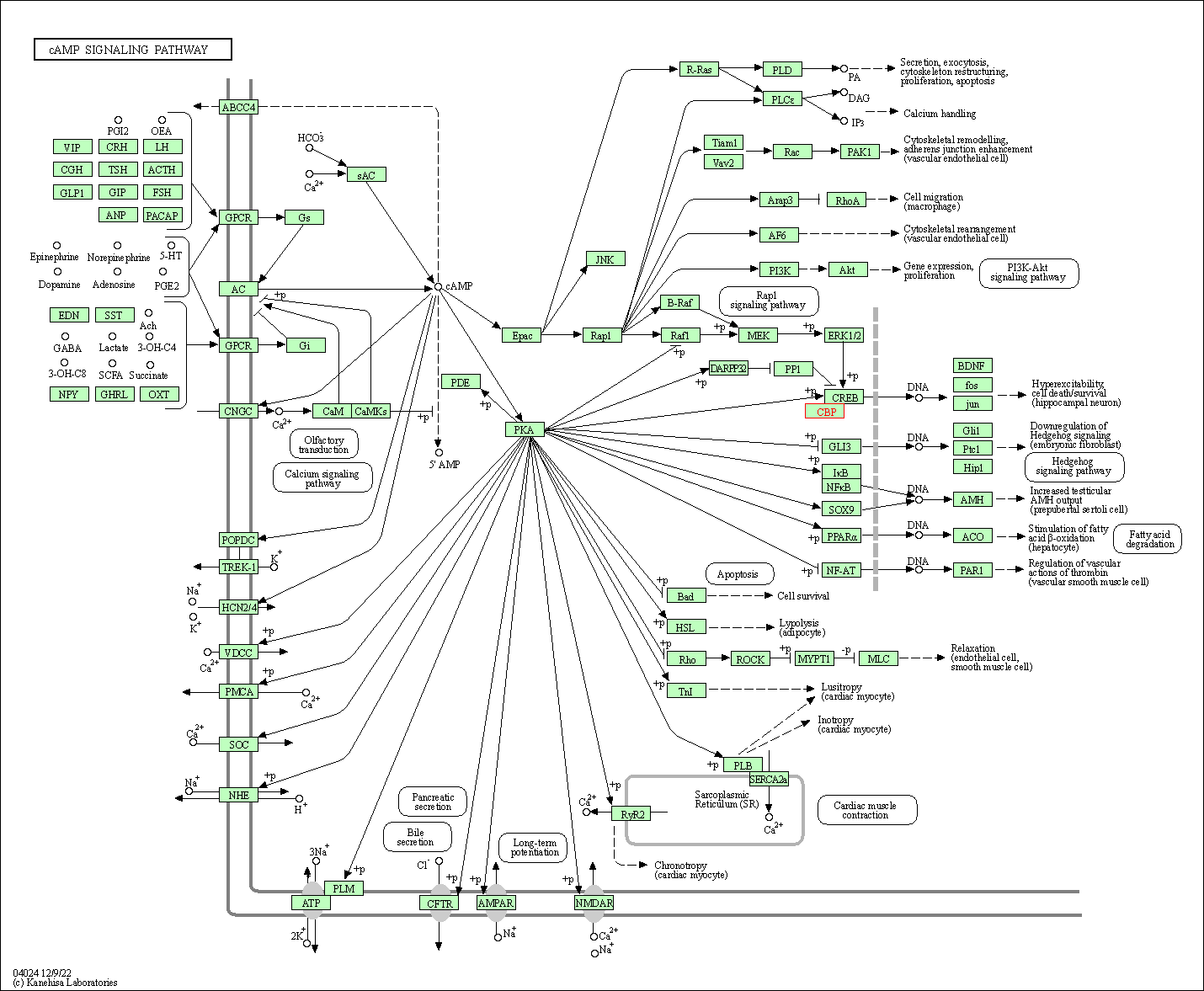
|
| Class: Environmental Information Processing => Signal transduction | Pathway Hierarchy | ||
| HIF-1 signaling pathway | hsa04066 | Affiliated Target |
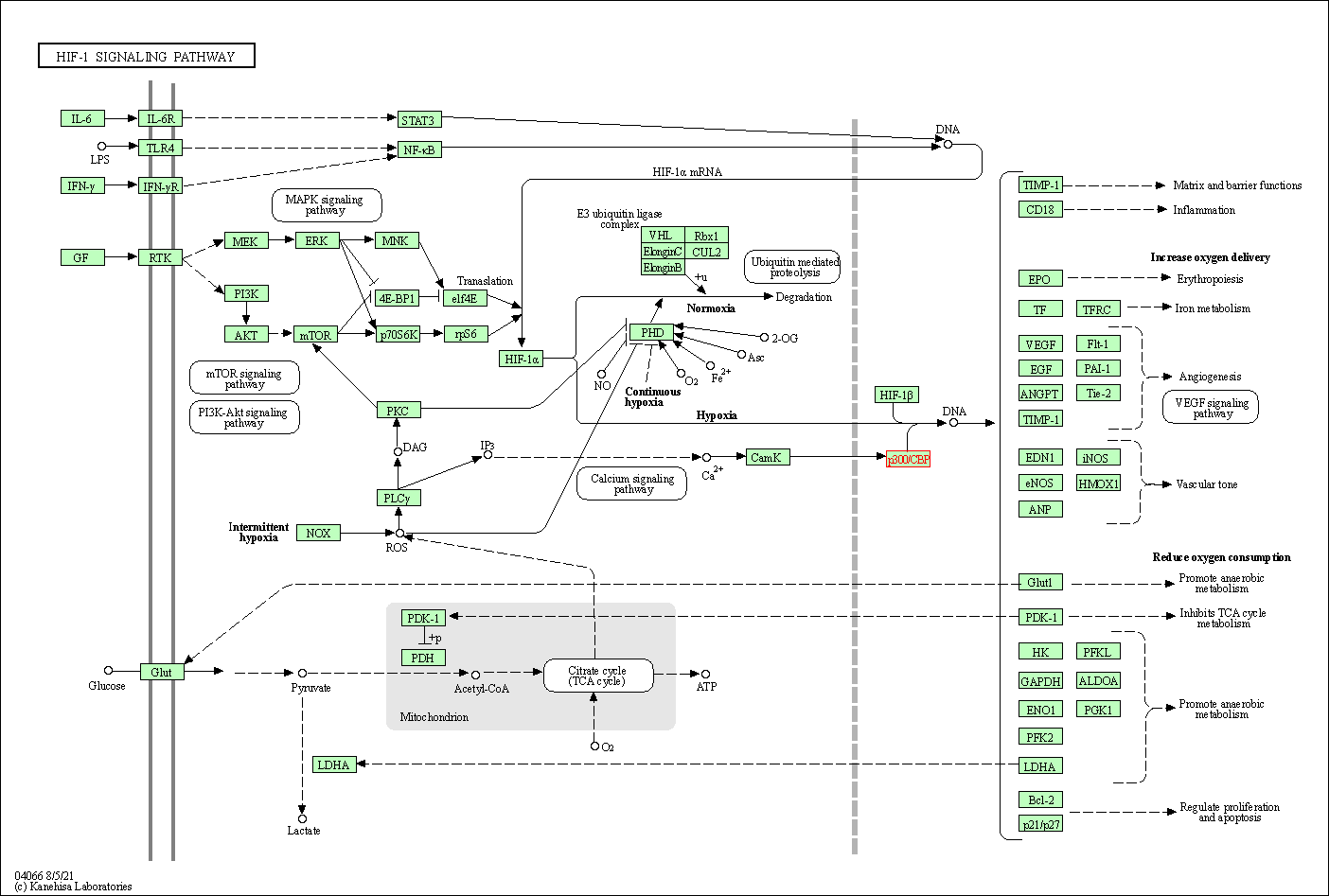
|
| Class: Environmental Information Processing => Signal transduction | Pathway Hierarchy | ||
| FoxO signaling pathway | hsa04068 | Affiliated Target |

|
| Class: Environmental Information Processing => Signal transduction | Pathway Hierarchy | ||
| Cell cycle | hsa04110 | Affiliated Target |

|
| Class: Cellular Processes => Cell growth and death | Pathway Hierarchy | ||
| Wnt signaling pathway | hsa04310 | Affiliated Target |

|
| Class: Environmental Information Processing => Signal transduction | Pathway Hierarchy | ||
| Notch signaling pathway | hsa04330 | Affiliated Target |

|
| Class: Environmental Information Processing => Signal transduction | Pathway Hierarchy | ||
| TGF-beta signaling pathway | hsa04350 | Affiliated Target |

|
| Class: Environmental Information Processing => Signal transduction | Pathway Hierarchy | ||
| Adherens junction | hsa04520 | Affiliated Target |

|
| Class: Cellular Processes => Cellular community - eukaryotes | Pathway Hierarchy | ||
| JAK-STAT signaling pathway | hsa04630 | Affiliated Target |

|
| Class: Environmental Information Processing => Signal transduction | Pathway Hierarchy | ||
| Long-term potentiation | hsa04720 | Affiliated Target |
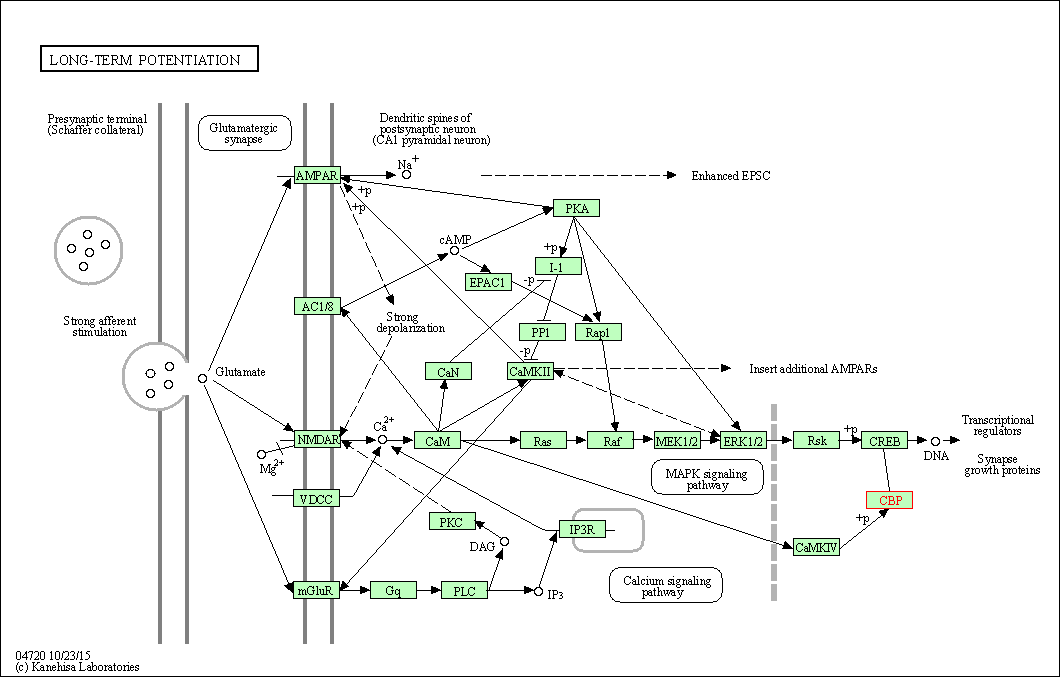
|
| Class: Organismal Systems => Nervous system | Pathway Hierarchy | ||
| Melanogenesis | hsa04916 | Affiliated Target |

|
| Class: Organismal Systems => Endocrine system | Pathway Hierarchy | ||
| Thyroid hormone signaling pathway | hsa04919 | Affiliated Target |
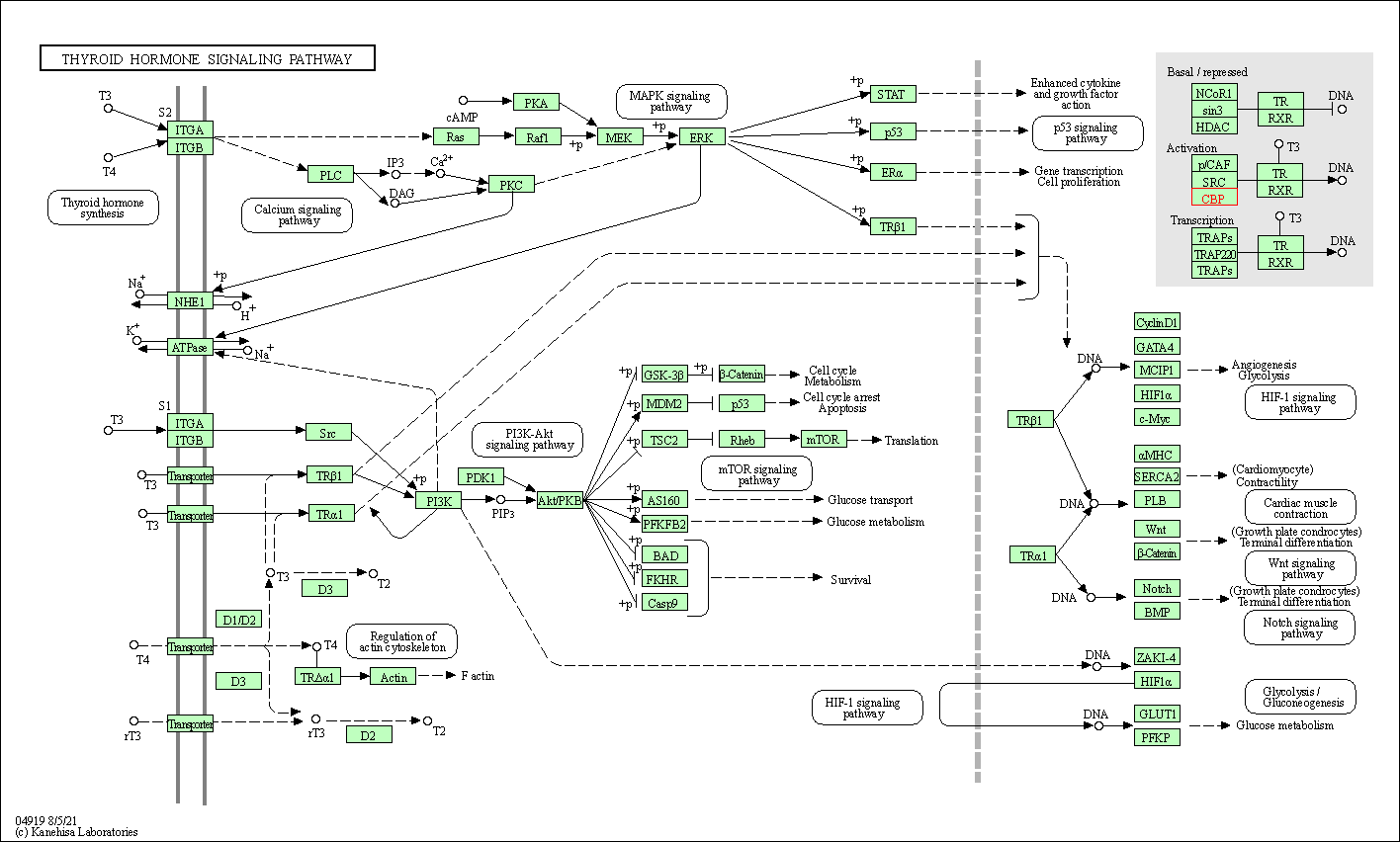
|
| Class: Organismal Systems => Endocrine system | Pathway Hierarchy | ||
| Glucagon signaling pathway | hsa04922 | Affiliated Target |
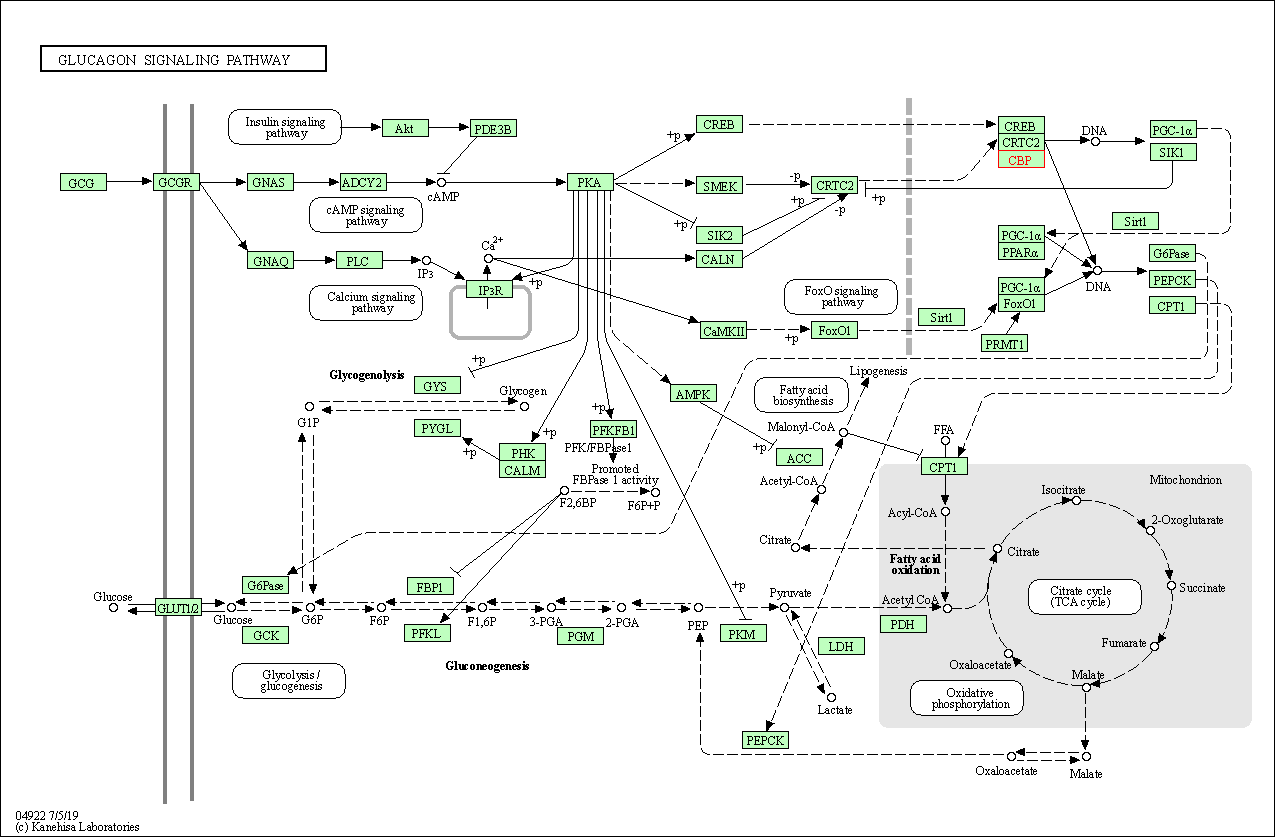
|
| Class: Organismal Systems => Endocrine system | Pathway Hierarchy | ||
| Growth hormone synthesis, secretion and action | hsa04935 | Affiliated Target |
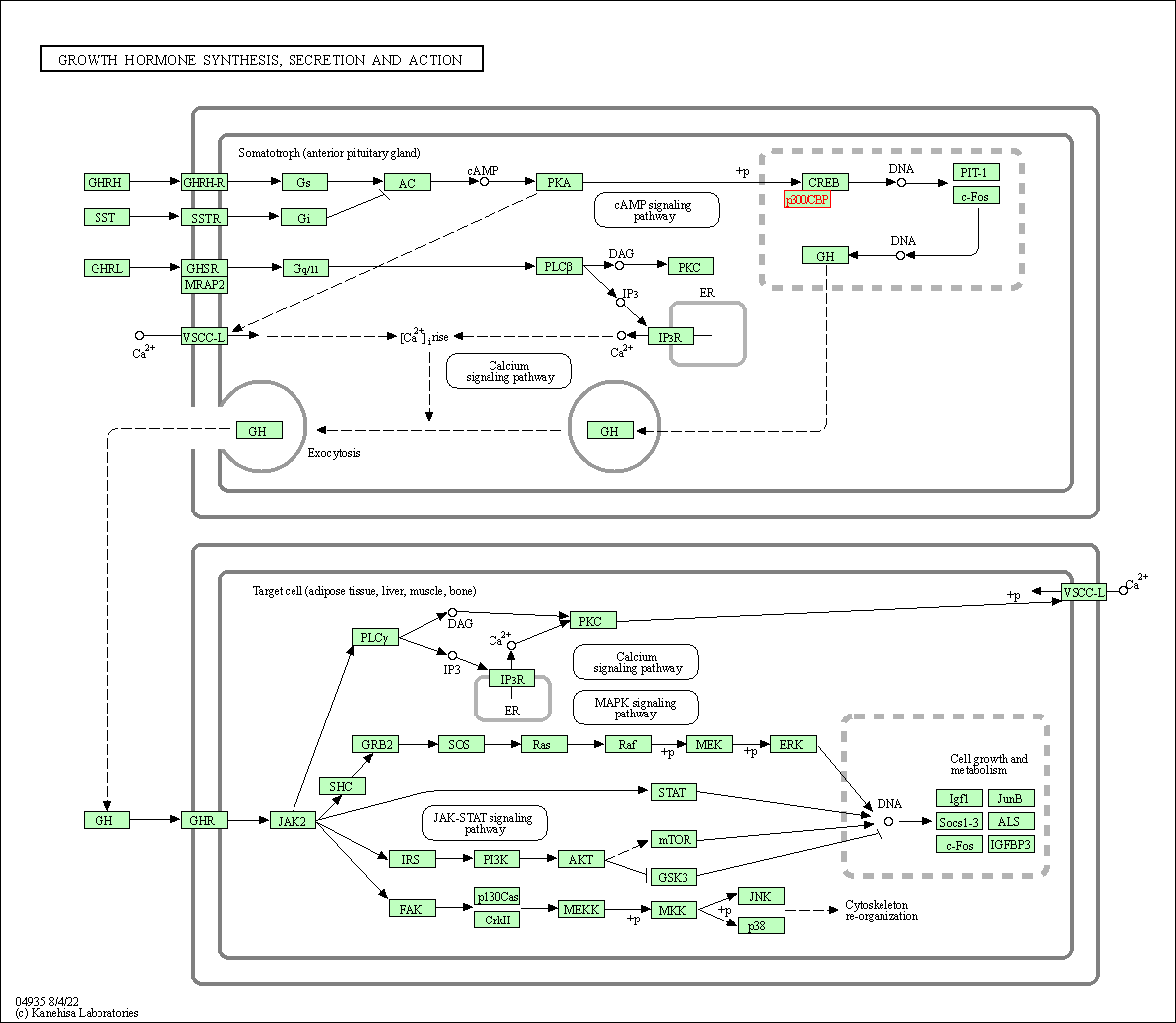
|
| Class: Organismal Systems => Endocrine system | Pathway Hierarchy | ||
| Click to Show/Hide the Information of Affiliated Human Pathways | |||
| Degree | 97 | Degree centrality | 1.04E-02 | Betweenness centrality | 1.08E-02 |
|---|---|---|---|---|---|
| Closeness centrality | 2.80E-01 | Radiality | 1.47E+01 | Clustering coefficient | 1.20E-01 |
| Neighborhood connectivity | 4.71E+01 | Topological coefficient | 2.75E-02 | Eccentricity | 10 |
| Download | Click to Download the Full PPI Network of This Target | ||||
| Chemical Structure based Activity Landscape of Target | Top |
|---|---|
| Drug Property Profile of Target | Top | |
|---|---|---|
| (1) Molecular Weight (mw) based Drug Clustering | (2) Octanol/Water Partition Coefficient (xlogp) based Drug Clustering | |
|
|
||
| (3) Hydrogen Bond Donor Count (hbonddonor) based Drug Clustering | (4) Hydrogen Bond Acceptor Count (hbondacc) based Drug Clustering | |
|
|
||
| (5) Rotatable Bond Count (rotbonds) based Drug Clustering | (6) Topological Polar Surface Area (polararea) based Drug Clustering | |
|
|
||
| "RO5" indicates the cutoff set by lipinski's rule of five; "D123AB" colored in GREEN denotes the no violation of any cutoff in lipinski's rule of five; "D123AB" colored in PURPLE refers to the violation of only one cutoff in lipinski's rule of five; "D123AB" colored in BLACK represents the violation of more than one cutoffs in lipinski's rule of five | ||
| Co-Targets | Top | |||||
|---|---|---|---|---|---|---|
| Co-Targets | ||||||
| Target Poor or Non Binders | Top | |||||
|---|---|---|---|---|---|---|
| Target Poor or Non Binders | ||||||
| Target Regulators | Top | |||||
|---|---|---|---|---|---|---|
| Target-regulating microRNAs | ||||||
| Target-interacting Proteins | ||||||
| References | Top | |||||
|---|---|---|---|---|---|---|
| REF 1 | Inhibition of Wnt/beta-catenin/CREB binding protein (CBP) signaling reverses pulmonary fibrosis. Proc Natl Acad Sci U S A. 2010 Aug 10;107(32):14309-14. | |||||
| REF 2 | ClinicalTrials.gov (NCT03568656) Study to Evaluate CCS1477 in Advanced Tumours. U.S. National Institutes of Health. | |||||
| REF 3 | Clinical pipeline report, company report or official report of the Pharmaceutical Research and Manufacturers of America (PhRMA) | |||||
| REF 4 | ClinicalTrials.gov (NCT01606579) Safety and Efficacy Study of PRI-724 in Subjects With Advanced Myeloid Malignancies. U.S. National Institutes of Health. | |||||
| REF 5 | ClinicalTrials.gov (NCT04575766) A Study of FT-7051 in Men With MCRPC. U.S. National Institutes of Health. | |||||
| REF 6 | BET inhibitors in cancer therapeutics: a patent review.Expert Opin Ther Pat. 2016;26(4):505-22. | |||||
| REF 7 | URL: http://www.guidetopharmacology.org Nucleic Acids Res. 2015 Oct 12. pii: gkv1037. The IUPHAR/BPS Guide to PHARMACOLOGY in 2016: towards curated quantitative interactions between 1300 protein targets and 6000 ligands. (Target id: 2734). | |||||
| REF 8 | A small molecule binding to the coactivator CREB-binding protein blocks apoptosis in cardiomyocytes. Chem Biol. 2011 Apr 22;18(4):531-41. | |||||
| REF 9 | Bromodomains and their pharmacological inhibitors. ChemMedChem. 2014 Mar;9(3):438-64. | |||||
| REF 10 | Fragment-based discovery of bromodomain inhibitors part 1: inhibitor binding modes and implications for lead discovery. J Med Chem. 2012 Jan 26;55(2):576-86. | |||||
| REF 11 | Structural insights revealed by the cocrystal structure of CCS1477 in complex with CBP bromodomain. doi:10.1016/j.bbrc.2022.07.021. | |||||
If You Find Any Error in Data or Bug in Web Service, Please Kindly Report It to Dr. Zhou and Dr. Zhang.

